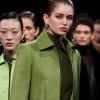Fashion is a dynamic, changing phenomenon that both expresses and is a response to the sociocultural and economic contexts of the era. From the richly embellished costumes of the 18th century to the streamlined designs of the 21st century, fashion fashions change with shifts in the surrounding society. In this paper, we explain the complex network flow between fashion and social, fashion fields in themselves, the historical importance of those fields, and their eventual effect on everyday life.
The Historical Progression of Fashion Trends
Fashion has always been a reflection of the times. At the start of the 20th century, clothing of the 1920s flapper dress symbolized female liberation and a rejection of traditional models of salvation. The 1960s saw a fashion trend that expressed youth opposition to tradition and an impulse for modernity like a tide that pulls the pendulum. Fashion trends in each era declared the trend to be a representation of the zeitgeist of the era and as a consequence the evolution of culture.
The Role of Fashion in Society
Fashion is a powerful way to make claims about identity, claims about status, and claims about belonging. It is also a social phenomenon of paramount significance which is also taken as a status symbol, an occupational symbol, or a group symbol. Moreover, changes in wardrobe can induce a business cycle by triggering a cascade effect all over the production process, across the process steps, and the selling process, as well as related to the global trade organization.
The Emergence and Influence of Trends
Trends also seem to only arise as a convergence of cultural needs, technological breakthroughs, and economic potential. For example, the post-World War II era has resulted in off-the-rack clothes, thereby making fashion accessible to a much wider population. In recent years, a phenomenal and overwhelming increase in the popularity of social media platforms has led to a phenomenal spread of trends, and influencers and celebrities have a significant contribution to forming public opinion.
Fashion as a Reflection of Cultural and Social Norms
Fashion is not only a mirror, and an important instrument providing in the realization of expectations of the culture and community. Having a preference for certain styles may be contradictory to the original gender identity itself, in line with body positivity, or result in social problems, such as. For instance, the androgynous fashion movement challenges the boundaries of gender categories, while the sustainable fashion movement focuses the attention on ecology issues.
The Economic Impact of Fashion Trends
Fashion is a leading economic force that can create employment, foster innovation, and lead to international trade. Trends are the basis of consumer wants and become a subtle influence on production time and store layout. But, on the other hand, the appearance of quick fashion paradoxically fostered an interest in environmental sustainability and the labor system leading to discussion over ethical fashion.
The Psychological Effects of Fashion
Appearance decisions can be powerful in driving psychology in terms of an individual feeling confident and how they feel as well as perceived information. Imitating a part of an aesthetic can be a claim of ownership, and give people the feeling that they are empowered, more confident, and relaxed. Each sentence builds on the previous statement and is version tested on all participants (N 32). Fashion is much more than a tool for making and doing instead provides an endless opportunity to manifest oneself in diverse ways, allowing for an exploration of the breadth and depth of aspects of self.
The Future of Fashion: Sustainability and Technology
Sustainable fashion is a matter of social concern because there is increasing concern about environmental issues. This involves but is not limited to, the use of green-sustainable materials, GOOD production/process, and circularity in fashion design. In addition, technology is becoming increasingly important to certain innovations, e.g., 3D printing, virtual fashion presentations, and wearable devices, which are changing the industry.
Fashion is not only garments; it is a unique blend of art, culture, economics, and psychology. Investigating the origin and impact/result of fashion fashion trends also provides us with a knowledge of those social challenges that are the in direct impulse of our daily lives. In the meantime, there is a pressing need for sustainable and socially responsible fashion to ensure that this colorful business stays sustainable.
ALSO READ | Fashion Forward: Unveiling the Top 2025 Trends Shaping the Future of Style
ALSO READ | From Runway to Real Life: How to Incorporate Modern Clothing Trends into Your Wardrobe
ALSO READ | There is a need to dissect the health advantages of lemon water: a guide to hydration and health





